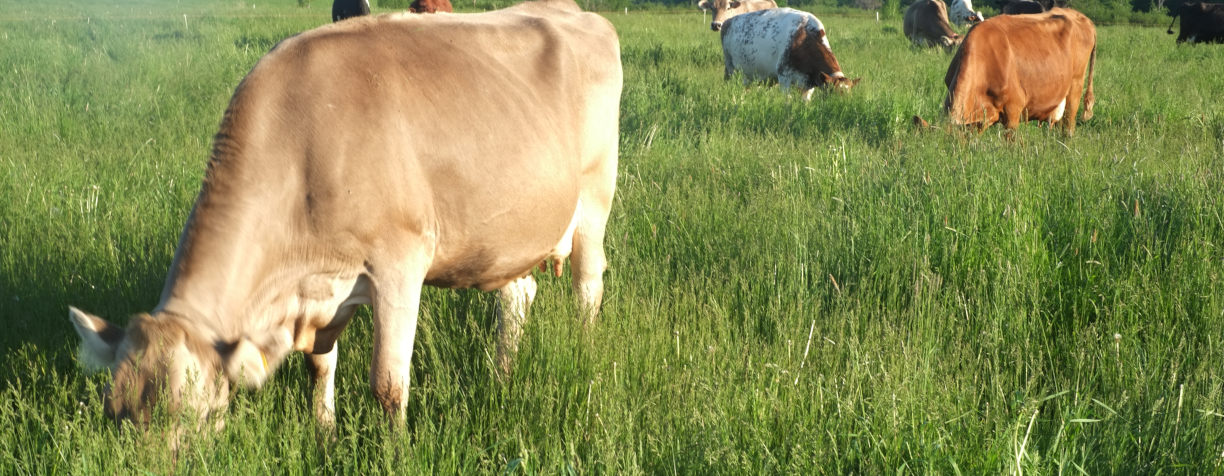By Mike Rankin
How does a person who is long on desire, will, and motivation but short on capital enter the dairy business?
Often it is by working on an established farm, but without a clear path to someday owning and operating their own farm business. Taking the ownership step often requires a capital investment and debt load that is prohibitive for future success.
At the same time when it is difficult to enter the dairy business, many current operators are reaching retirement age and exiting the dairy industry. Most do not have a successor to keep the operation a viable milk-producing entity.
Enter Joe Tomandl and the Dairy Grazing Apprenticeship (DGA) program.
Tomandl, who himself is an experienced dairy grazier near Medford, Wis., spurred the development of DGA and assumed directorship of the program from 2010 to 2013. It then became an independent nonprofit organization. Since that time, Tomandl has served as executive director.
The DGA program operates to match aspiring dairy farmers, or apprentices, with master dairy graziers, experienced dairy producers who are willing to share their knowledge and experience of grazing dairy cattle and operating a successful business.
“Though apprentices earn a salary while working with the master grazier, it’s more than just a job and we encourage participants to focus on learning the art and science of dairy grazing,” Tomandl said. “Further, we want our apprentices to appreciate what it takes to run a successful business and understand the reasons why a particular decision gets made.”
Pasture-based dairies do not guarantee an easy road to future ownership, but they may provide the most realistic one given their lower overall capital investment costs compared to a conventional dairy operation.
The accredited DGA program consists of 4,000 hours of training over a two-year period. Apprentices are employed by the master dairy grazier and receive over 3,700 hours of mentorship and training. In addition, the apprentice engages in nearly 300 hours of educational instruction.
The educational instruction consists of traditional courses in pasture management, milk quality, herd health, dairy nutrition, and soil science. The apprentice also attends pasture walks, conferences, and receives training in holistic management and professional development.
“The earn and learn model being used is the same one that the skilled trade associations have successfully implemented for many years,” Tomandl noted. DGA operates as a 501(c)3 nonprofit organization and is registered with the U.S. Department of Labor’s Employment and Training Administration.
Each master-apprentice pair is assigned a local education coordinator. This individual monitors the relationship, provides educational support, and on-farm technical services.
DGA also provides business planning for both the apprentices, who may be looking to start their own dairy after completing the program, and for masters who in some cases are looking for the best way to transition into retirement and transfer farm ownership.
Once an apprentice completes the two-year program, they graduate to journey dairy grazier status. At that point, they continue to receive program support in an effort to reach their goals and have the option of eventually becoming a master dairy grazier with the opportunity to mentor a future apprentice.
Currently, DGA has 88 approved master farm sites in nine states. There are 28 active master-apprentice relationships and 95 apprentice candidates in line for placement. Being a national program, DGA is able to set up relationships in any state. To date, there are 13 graduates from the apprenticeship program; their stories are as diverse as a mixed-species pasture.
Talk to DGA graduates and you’ll find some were attracted to the program because they sought the lifestyle that a dairy grazing farm has to offer; for others, it was a matter of economics.
There are currently DGA graduates who are operating their own grazing dairy or working toward that end. In some cases, it’s the farm of their dairy grazing master whose eyes are set on retirement. Other graduates continue to work as employees, but with a background that now enables them to have far greater decision-making and management responsibilities. Some started in the program with little or no dairy background, others were raised on a dairy farm or had at one time owned or managed a farm.
The lack of new entries into dairy farming will continue to be an issue into the foreseeable future. The required capital investment remains high and shows no sign of declining; further, equity is needed to even get through the door of most agricultural lending establishments.
DGA is by no means a so-called free ride, but it does and has opened the door to success for young dairy farmers who otherwise would not have been in a position to pursue their pasture-based career dreams. Several apprentices have received heifers as a part of their compensation package and have completed the program with the start of their own small herd.
To learn more about the Dairy Grazing Apprenticeship program, visit their website at www.dga-national.org or email info@dga-national.org.


